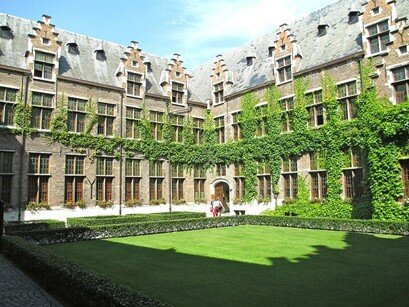The compatibility of vertical greening with historic building materials
The global climate change and rapid urbanization have caused a lot of urban challenges. In the last decades, the urban heat island received an increased amount of attention and concern. Due to hard coverage and building infrastructure, the city centres are submissive to increased temperatures and increased pollutions levels relative to their surroundings. Mitigation of this urban heat island is one of the urban challenges.
Therefore, cities are implementing green initiatives to lower the elevated temperatures and pollution levels, improving the health and well-being for their residents. Green initiatives represent a wide spectrum of nature-based solutions where the implementation of green offers social, environmental and economic benefits.
However, the urban heat island effect is typically the largest in the core of the city, where a high density urban development and the abundance of built heritage can hinder the implementation of green initiatives. The rules of conservation and the major concern about the reaction of the historic materials on green elements complicate this implementation. Heritage buildings have their historical, cultural and aesthetic values in the city. To preserve the built heritage in the core of the city, they may need to contribute to tackling the urban challenges.

Nevertheless, it is uncertain how historical building materials will react on the implementation of green initiatives that will affect the environmental conditions. In this research, we scope the compatibility of vertical greening with historic buildings, in terms of microclimatic changes and considering impacts of salt crystallization, frost events, biodeterioration and pollutant deposition. Vertical greening represents vegetation growing along exterior walls. Either plants, rooted on the ground, climb up the facade by attaching themselves on the vertical surfaces or using metal wires or plants, rooted on the roof, hang down from the top of the facade. Living walls, with plants rooted on the façade, are excluded in this stage, because of a more complex implementation on historic fabric.